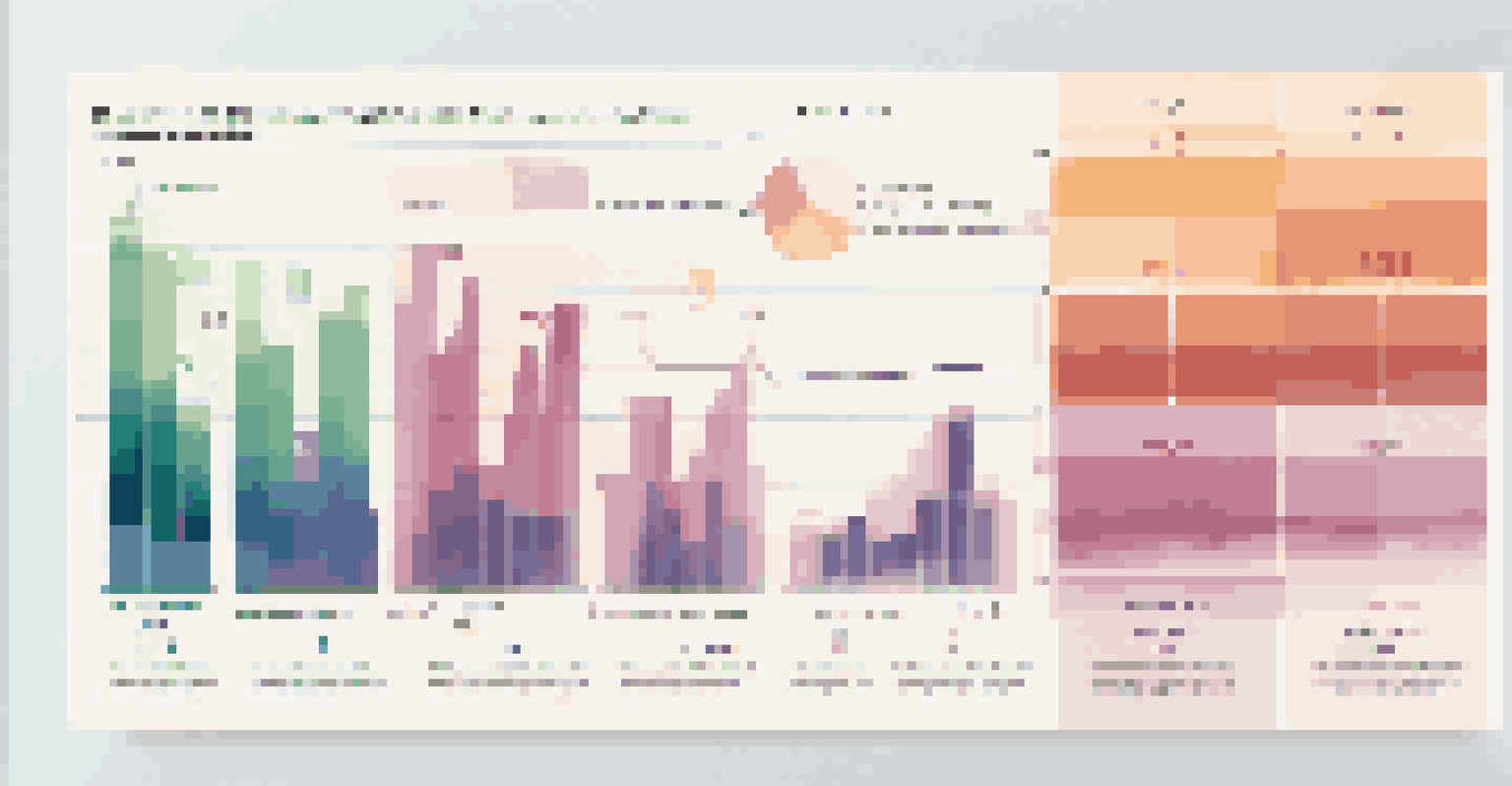How to Create Effective Visualizations for Financial Data

Understanding the Importance of Financial Data Visualization
Visualizing financial data is crucial for making complex information digestible. It helps stakeholders grasp trends, patterns, and anomalies at a glance, which can be especially beneficial in fast-paced business environments. When data is presented visually, it becomes easier to identify key insights that may otherwise remain hidden in spreadsheets.
Data visualization is not just about presenting data; it's about communicating information effectively.
For instance, consider a company evaluating its quarterly earnings. A simple line graph can succinctly show revenue trends over time, allowing decision-makers to quickly determine if the business is growing or facing challenges. This clarity is vital for effective financial planning and forecasting.
Ultimately, effective visualizations bridge the gap between data analysis and actionable insights, ensuring that everyone—from analysts to executives—can engage with the data meaningfully.
Choosing the Right Type of Visualization
Different types of data call for different visualization techniques. For financial data, bar charts, line graphs, and pie charts are popular choices, each serving a unique purpose. Bar charts are excellent for comparing discrete values, while line graphs effectively illustrate trends over time.

For example, if you’re looking to compare the revenue of different product lines, a bar chart can clearly showcase which products are performing best. Conversely, if you want to analyze how a company’s stock price has fluctuated over the past year, a line graph will provide a clear visual of that trend.
Visualizations Enhance Data Clarity
Visualizing financial data simplifies complex information, allowing stakeholders to quickly identify trends and insights.
Selecting the right type of visualization not only enhances clarity but also ensures that your audience interprets the data as intended.
Simplifying Complex Data Sets
When dealing with financial data, simplicity is key. Overly complex visualizations can overwhelm viewers, leading to confusion rather than clarity. Focus on highlighting the most critical data points and avoid cluttering your visuals with excessive information.
The goal is to turn data into information, and information into insight.
For instance, if you're presenting a budget report, consider summarizing the data into key categories rather than displaying every line item. This approach helps your audience focus on the most impactful figures, such as total expenses versus revenue.
Remember, the goal is to convey information quickly and effectively, so simplify wherever possible.
Incorporating Color Wisely
Color plays a significant role in data visualization, influencing how information is perceived. Using a consistent color palette can enhance your visualizations, making them more engaging and easier to understand. However, it's essential to choose colors that are accessible and convey meaning.
For example, using red to indicate losses and green for gains can quickly communicate financial performance. But be cautious—too many colors can create confusion. Stick to a limited palette that complements your message and maintains readability.
Choose the Right Visualization Type
Different financial data requires specific visualization techniques, like bar charts for comparisons and line graphs for trends.
Ultimately, thoughtful use of color can elevate your visualizations, making them not only more attractive but also more effective.
Adding Context with Annotations
Annotations can provide valuable context to your visualizations, guiding the audience through complex data. Adding notes or markers can help explain significant trends, anomalies, or milestones. This additional information makes your visuals more informative and easier to interpret.
For instance, if a sudden drop in sales occurs during a specific month, an annotation could explain that it coincided with a seasonal trend or external factor. This insight allows viewers to understand the data on a deeper level.
Integrating annotations not only clarifies your visualizations but also fosters a narrative around the data that aids in comprehension.
Ensuring Accessibility for All Users
Accessibility is a crucial consideration when creating financial visualizations. Ensure that your visuals are designed to be understood by all audience members, including those with visual impairments. This might involve using high-contrast colors, descriptive labels, and alternative text.
For example, providing a text description of a chart can help users who rely on screen readers to understand the data presented. Making these adjustments not only broadens your audience but also demonstrates a commitment to inclusivity.
Accessibility is Essential in Visuals
Designing accessible visualizations ensures that all users, including those with visual impairments, can understand the data presented.
Ultimately, accessible visualizations contribute to a more informed and engaged audience.
Testing and Iterating Your Visualizations
Once you’ve created your visualizations, it’s important to test them with real users. Gathering feedback can reveal whether your visuals effectively communicate the intended message. This iterative process is essential for refining your designs and ensuring they resonate with your audience.
Consider conducting a brief survey or focus group to gather insights on how users interpret your visualizations. Are they easily understood? Do they convey the necessary information? This feedback can guide your refinements.

Continuous improvement will not only enhance your current visualizations but also inform your future projects.